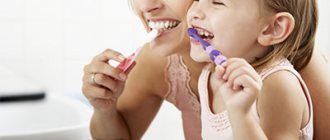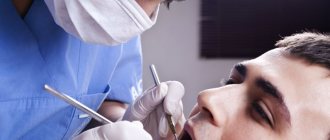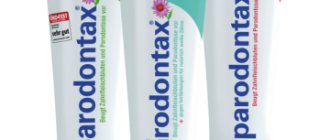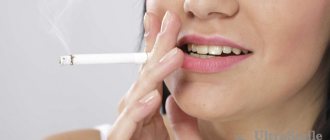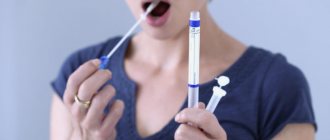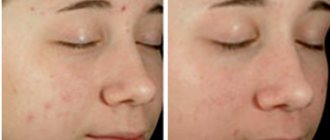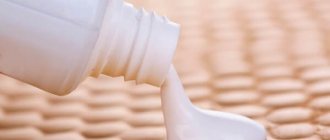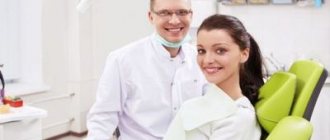Prevention
- A healthy lifestyle and daily oral care using personal hygiene products will help prevent the development of gumboil. For cleaning, use a medium-hard brush.
- After each meal, it is recommended to rinse your mouth with a special mouthwash or use dental floss. Instead of a pharmaceutical composition, it is allowed to use an aqueous solution of food salt, sea salt or an alcoholic tincture of propolis.
- Do not use non-sterile objects as toothpicks. Such actions lead to mechanical injuries and infection.
- Periodic professional dental cleaning helps remove stone, which provokes the development of inflammation of the gums with pus.
- The daily diet must be supplemented with fresh vegetables and fruits. Apples, carrots and other solid plant foods cleanse plaque from enamel and strengthen teeth.
It is also important to treat dental defects immediately and undergo regular clinical examinations at least twice a year. It is much easier to prevent dental disease than to treat its negative consequences. You should be attentive to your health and not ignore the warning signals that your body gives.
Why you shouldn't swallow pasta
The danger of the substance entering the body is due to the components contained in its composition:
- Saccharin. Few people know that toothpaste contains sugar. And in large quantities, especially in children's pastes, in order to make the product palatable.
- Glycerol. Manufacturers add it so that hygiene products do not dry out and can be used for a long time after opening the tube. But if this substance systematically enters the esophagus, this is fraught with an inflammatory process in the organs of the gastrointestinal tract.
- Paraffin. Few people know that toothpaste contains paraffin, the same as candles. It is added to the composition of the product in order to achieve a viscous consistency. If a drop of this substance enters the esophagus, there is no danger. But if you have a habit of swallowing toothpaste while brushing your teeth, this is dangerous for the development of inflammatory processes and unpleasant symptoms in the form of nausea, vomiting or problems with bowel movements.
- Menthol. This substance is used to keep your breath fresh for a long time. Especially for those people who suffer from halitosis. But at the same time, this component negatively affects the functioning of the cardiovascular system. Therefore, it is not recommended to use pastes with a high content of menthol in the composition.
- Formaldehyde. This component is an excellent assistant in the fight against germs and various pathogens. But at the same time, this substance is toxic. When formaldehyde is systematically ingested into the body, the following problems may occur: dysfunction of the visual apparatus, development of kidney diseases, and impaired liver function.
So, we can summarize that if you accidentally swallowed a small amount of paste once, there is no need to fear for your health. But if you like to taste pasta often, it may harm your health. also supervise the child when he brushes his teeth, do not allow him to swallow the toothpaste, teach him to spit and explain the consequences of constantly swallowing the product.
Dear readers!
Subscribe to our channel “ TvoyZubnoy ” and you will not miss our new publications. Share this information on social networks and like it - Our team will be pleased to see that our efforts are appreciated by you.
Dangerous additives
Saccharin is a non-hazardous substance that helps manufacturers make the taste of pasta more pleasant and soft. However, sugar can also negatively affect the condition of the oral cavity, because, as is known, sweets provoke the development of bacteria and can lead to the gradual destruction of hard tissues.
Glycerin is a necessary additive that prevents toothpaste from quickly hardening and drying out even when opened. Unfortunately, the substance can cause digestive problems. Another component is paraffin. It is necessary to achieve the thickness and viscosity of the product. Large amounts of this substance in the body can lead to severe vomiting or constipation.
Is menthol included in toothpastes dangerous? Unfortunately, yes, it can negatively affect the functioning of the human heart and blood vessels, while it freshens breath very well. Formaldehyde is necessary to resist dangerous microbes, however, frequent use of pastes containing it, and especially their entry into the body when swallowed, can lead to vision problems and the development of pathological processes in the liver and kidneys.
What's harmful about children's toothpaste?
- Mash, where is the toothpaste? — I ask my rather licking daughter. “Mom, I ate it,” the child honestly states. - It was very tasty.
All children eat toothpaste, especially tasty ones. And we understand that this is not good, but what to do? What toothpaste should I choose so that my teeth are clean and, even if the child swallows it, the child does not get poisoned?
According to a non-profit study by the Environmental Working Group (EWG), about 60 untested ingredients can enter a child's body every day through the use of children's cosmetics.
One of the most striking examples of “harmless” at first glance hygiene products is children's toothpaste.
1. Saccharin. To make children more willing to brush their teeth, manufacturers often add SUCHARIN to the toothpaste. It is important to know that saccharin is prohibited for use in many countries, since in dosages exceeding the maximum permissible standards it can be carcinogenic.
2. Sodium lauryl sulfate . Another harmful component of children's toothpaste is sodium lauryl sulfate. This cheap foaming agent is used in toothpastes, shampoos and shower gels. By the way, it is also used in the automotive industry to clean engines from oil. It dries the skin, makes it rough and promotes the appearance of cracks, irritates the mucous membranes.
3. Chlorhexidine. Antimicrobial component. Unfortunately, while destroying pathogenic microflora, chlorhexidine also disrupts the normal flora of the oral cavity, which performs a protective function. Dysbacteriosis of the mucous membrane leads to damage to the mucous membrane and tooth decay; gives rise to the development of candidiasis (thrush). But with long-term use of pastes with antibiotics, the intestinal microflora is also affected, which inevitably leads to the occurrence of dysbiosis.
4. Triclosan.
5. Artificial colors can cause allergies.
About fluoride
To prevent caries, it is preferable to use toothpastes with the addition of fluorides in organic form (the paste should contain the component Olaflur or aminofluoride). For children, special toothpastes are produced with a lower content of fluoride compounds than for adults (for example, in the SPLAT Junior line the fluoride content is as follows: in foam with fluoride 0.01 percent, in toothpastes for children 3-8 years old - 0.05 percent) .Toothpastes can provide teeth with calcium and fluoride by no more than 30 percent.
This is only part of the troubles that arise when using toothpastes, the production of which uses cheap and, until recently, very common, but unsafe ingredients. Therefore, more and more parents are paying close attention to the composition of the hygiene products they choose for their children. And more and more parents are choosing children's toothpastes that are completely safe, do not cause allergies, and do not undermine the health resources of the growing body.
What is useful?
- Baby products may contain enzymes (for example, papain ) that soften plaque until it dissolves. - A complex of unique milk enzymes ( lactoferrin, lactoperoxidase, lysozyme and glucose oxidase ) provides protection against bacteria, gently removes plaque, enhances the protective properties of saliva and strengthening local immunity. It helps cleanse tooth enamel even in the most difficult to reach places. — Natural casein protein, which is added to pastes, prevents the attachment of cariogenic bacteria to the surface of the teeth and increases the concentration of calcium and phosphate in the hard layers of enamel.
— It’s good if the paste contains bioactive organic calcium from eggshells. It helps form the enamel of baby teeth.
If a child ate pasta!
If a child has eaten baby toothpaste (within a third to a half of the tube), then just watch him. If you feel abnormal, consult a physician. If more than a third of a tube of adult toothpaste with a high fluoride content has been swallowed, consult a doctor!
We thank Anna Galimova, head of the Scientific Research Institute, for the information provided.
Types of dental abscess
Pyogenic bacteria enter healthy gum tissue through the bloodstream or due to mechanical damage. An abscess appears in the area of the affected element. When the abscess matures, the mucous membrane acquires a bluish tint, and a whitish spot or characteristic bubble appears. With its rupture, a fistula is formed in the periodontium, through which the contents flow out. This phenomenon does not lead to the disappearance of the problem, the inflammation remains. The pathology is indicated by the flow of pus from the gums when pressing on the affected area. There are several types of abscess:
What to do if a child ate adult pasta
Adult products contain fluoride. They are dangerous when ingested in large quantities into the gastrointestinal tract. Cause the following negative reactions:
- intoxication with increased body temperature;
- irritation and inflammation of the mucous membrane;
- profuse diarrhea with risk of dehydration.
Parents should give the child a sorbent by immediately going to the hospital. If the doctor sees toxins in the composition, he will prescribe gastric lavage. Additionally, therapy is carried out to replenish the lack of fluid caused by diarrhea. Parents should not give other medications themselves.
Note! The pediatrician will recommend staying in the hospital for 1-2 days after swallowing the substance to eliminate the risk of adverse reactions. If they appear, additional therapy is prescribed.
Swallowing toothpaste in small quantities does not lead to disruption of body functions. But if a child or adult has swallowed a large amount of the product, consult a doctor. The paste can cause serious harm to the gastrointestinal tract. To eliminate the risk for young children, consult a dentist to choose a product that contains only natural ingredients.
If children swallow toothpaste: what should parents do?
Brushing your teeth is the basis for preventing caries and its complications. Brushing your teeth removes bacterial plaque, the main cause of gum inflammation and tooth decay. How to achieve such results? Using a regular toothbrush and toothpaste. To stimulate interest in brushing teeth, many manufacturers make them tasty, bright and introduce various inclusions into them. On the one hand, such inclusions add interest, on the other hand, they can cause children to simply swallow the paste, adding to the anxiety of parents. MedAboutMe will tell you about the dangers of swallowing toothpaste, depending on its type.
Tags
Dental restoration, dental imaging, dental tomography, dental implantation, tooth extraction, wisdom tooth removal, dental plaque removal, teeth polishing, teeth whitening, zoom, teeth whitening, Amazing PROSTHETICS, dental prosthetics, treatment of caries, treatment of pulpitis, treatment of periodontal disease, treatment of periodontitis, treatment of periodontitis, treatment schemes. Treatment of caries Treatment of pulpitis Treatment of mobility Treatment of periodontitis
prostheticstreatmentmoscowpricesarticlesandhelpimplantationclinicservicescariesquestionssymptomstimerecordpatientemergencyreviewsfirstcontactspolicysignupresponsemedicalpromotionsbracesiswhiteningorthodonticssurgerydepartmentsdiseasepersonaldatadetailednewsdiagnosticshoursyourveneersinstallationcenter
